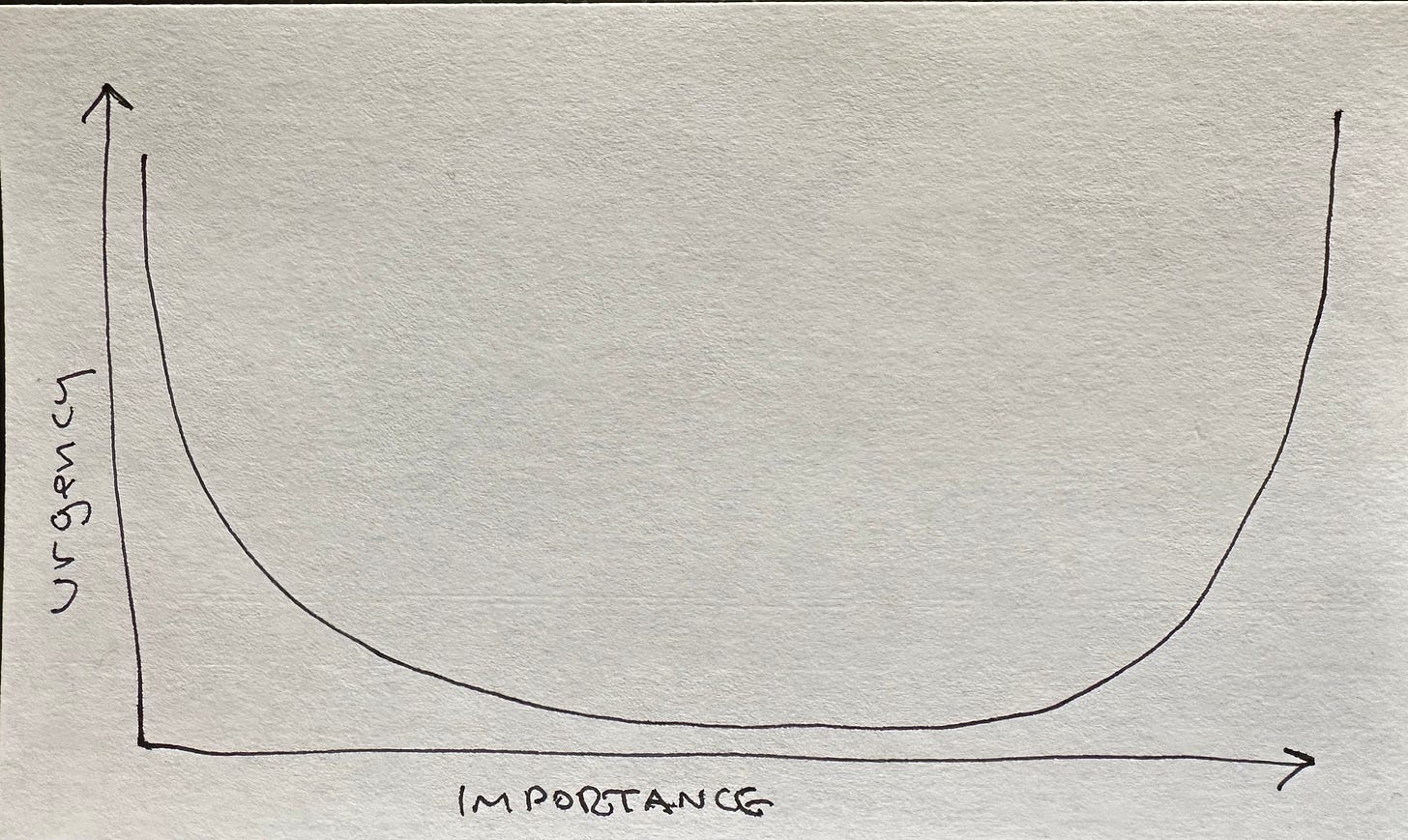For Starters #23: No Whale Hunting
No, getting their logo on your website isn't actually worth it.
One of the most valuable lessons I’ve learned is that each organization operates at a it’s own frequency.
By operates, I mean: how quickly the organization can respond to new inputs, how quickly decisions are made, and to be blunt - how quickly they’ll pay invoices. Some organizations operate on a daily frequency, others weekly, some monthly, and for the real laggards - quarterly. Yes, there’s much I, the vendor, can do to grease the wheels. But, beyond a certain point - there’s not. So, rather than fight the natural organizational frequency, I piece together the different organizations (frequencies) in my pipeline and put clients with alternating frequencies in the white space.
Stewart Brand covers a similar concept in his classic The Long Clock of Now.
Fashion is constantly changing.
Infrastructure, by contrast, changes over decades - or put the other way around - it takes decades to change infrastructure.
Understanding where a given organization is in this diagram will help you better work with them, and them with you.
In their beginning, startups are closer to Fashion (e.g. trends, marketing, advertising) needing to constantly change and adapt, their goal is to become so successful they become indistinguishable from Infrastructure (plumbing, roads, cellular networks).
Big, established household names - e.g. Fortune 500 companies - are closer to Governance (law, government, education).
It’s very difficult for organizations at different strata to effectively collaborate.
As my wife says about high schoolers dating - “if the grades don’t touch, you shouldn’t either.”
Same is true here.
“Fashion” can date “Commerce”. “Infrastructure” can date “Commerce” and “Governance”. “Fashion” and “Governance” shouldn’t date.
Which is to say, startups must resist the urge to go after enterprise customers as initial clients or customers.
The two organizations work at such different frequencies, the engagement will only be frustrating for both.
I’ve been in these meetings - on both sides of the table.
Startups will be frustrated with how long it takes to do anything (including getting paid). Enterprises will be frustrated with how immature and unsatisfying the solution is and just how fixated the startup is about getting paid such a relatively small amount.
To simplify this contrast; Startups are always playing offense. Enterprises only play defense.
Playing defense means minimizing risk. Whether or not the startup’s solution actually works is the least of the risk. Far bigger concerns are; business continuity risk, brand reputation risk, IP risk, data security risk, and individual job security risk (“No one gets fired for hiring IBM”). The average startup is not mature enough to hold any of that risk, whereas Microsoft, SAP, Salesforce, et. al, have built their empires on absorbing those risks.
Worst of all, playing defense means there’s little need to operate with any of the urgency startups require to learn faster. Urgency in an enterprise is too often driven by individual perm farming or an exogenous shock, and not enough by deliberate strategic importance.
This means focusing on these whale clients will be an unsatisfying distraction from acquiring the iterative learning and case studies needed to develop a startup into resilient business. Slower moving organizations mean fewer iterations, larger organizations means less capacity for more diverse iterations. All of which means fewer and fewer chances to ensure the solution works and improve it.
As we’ve talked about in earlier installments, there’s lots of B2B buyers out there - the vast majority of US companies are not on the Fortune 500 list, I’d suspect many of them are in the “Commerce” layer to your startup’s “Fashion” layer.
If you are going to pursue whale clients some tips to keep in mind:
Think if it less as enterprise sales and more as ongoing relationship development with your individual contacts. Given the shortness of the average corporate tenure, bet on an engagement at their next organization not their current one.
Pursue a posture of FOMO, get the potential enterprise clients super excited about all the great work you’re doing and how it can help them, and in the same sentence clearly state you’re not in a position to work with them. Yet. Always yet.
Invoice paid in full ahead of any engagement kick-off.
Be careful out there,







